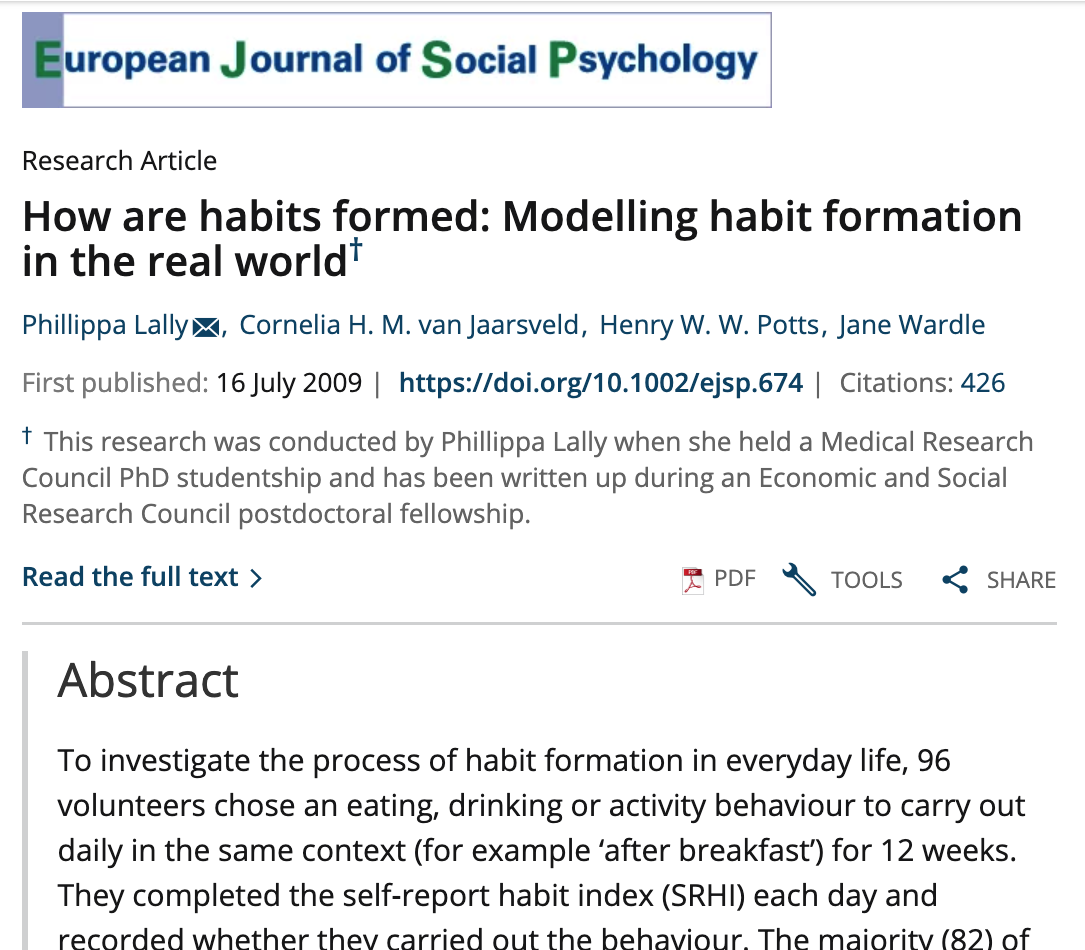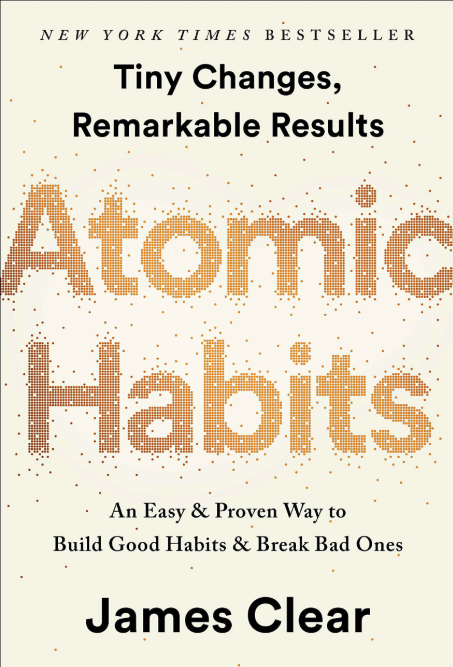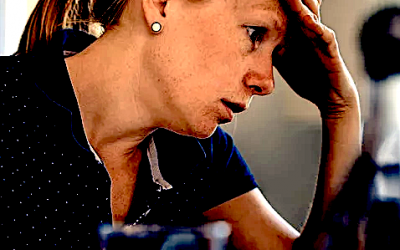Maxwell Maltz graduated with a doctorate in medicine from the Columbia University College of Physicians and Surgeons in 1923. He also trained under German plastic surgeons who were considered some of the most advanced in cosmetic surgery at that time. After decades of experience as a plastic surgeon, he noticed a familiar pattern with his patients.
When Dr. Maltz would perform an operation -- like rhinoplasty or a facelift for example -- he found that it would take his patients about 21 days to get used to seeing their new face.
Similarly, when a patient had an arm or a leg  amputated, Dr Maltz noticed that the patient would sense their phantom limb for about 21 days before adjusting to the amputation.
amputated, Dr Maltz noticed that the patient would sense their phantom limb for about 21 days before adjusting to the amputation.
These experiences prompted Maltz to think about his own adjustment period to new behaviors, and he noticed it also took about 21 days to get used to the changes. Maltz wrote about these experiences, "These, and many other commonly observed phenomena tend to show that it requires a minimum of about 21 days for an old mental image to dissolve and a new one to jell."
In 1960, Maltz published that quote and his other thoughts on behavior change in his book, Psycho-Cybernetics.
The book was a blockbuster and had sold more than 30 million copies. And it's where people got the misinformed idea of habits taking 21 days to form.
21 Day Habit Myth
This myth has persisted for decades by "self-help" professionals, diet fads, 21 day cleanses, 21 day challenges and numerous books touting this 21 day habit idea.
One reason this idea has had such stickiness is because if something is repeated enough times most start to believe it.
This is known as the 'illusory truth effect'.
Illusory Truth Effect
This effect has been proven in multiple studies, one of which included over 2,100 people. The effect is attributed to a part of the brain called the perirhinal cortex. This part of the brain shows an interaction between repetition and ratings of perceived truth.
It also shows that if something is repeated and it rhymes, that it becomes more believable. One of the most famous examples with tremendous results is:
'If the glove don't fit, you must acquit'.
Other research has shown that even the knowledgeable aren't immune. Yes, the illusory truth effects occurred even when participants knew better.
But just because something rhymes or is repeated, doesn't make it true.
Knowing this makes sense as to why the "21 Days" myth would spread. Also, the time frame is short enough to be doable, and long enough to suggest a substantial time commitment. And who wouldn't like the idea of changing your life in just three weeks?
But Dr. Maltz was simply observing what was going on around him and wasn't making a statement of fact. Furthermore, he wrote that this was the minimum amount of time needed to adapt to a new change.
So how long does it actually take to form a new habit?
What's the science to back this up?
How Long to Build a New Habit?
In a study published in the European Journal of Social Psychology, researchers wanted to find out how long it takes to acquire a new habit.
The research focused on the habits of 96 people over a 12-week period. Each person chose a new habit for the 12 weeks and reported each day on whether or not they did the behavior and how automatic the behavior felt.

Some people chose simple habits like "drinking a bottle of water with lunch." Others chose more difficult tasks like "running for 15 minutes before dinner."
At the end of the 12 weeks, the researchers analyzed the data to determine how long it took each person to generate new behavior with automaticity from habit formation.
"The time it took participants to reach 95% of their asymptote of automaticity ranged from 18 to 254 days; indicating considerable variation in how long it takes people to reach their limit of automaticity and highlighting that it can take a very long time."
Everyone formed habits within different times. The study shows that it can take two months to eight months to build a new behavior into your life.
And if you look at the Stages of Change model, by Dr James Prochaska, he suggests that lasting change happens after about 6 months. He came to this realization by studying how addicts were able to quit their bad habits and noticed that they frequently would fall off the wagon, but that they would also resume their efforts until eventually being clean for life.
It doesn't matter too significantly if you mess up every now and then. Building better habits is not an all-or-nothing process. It's more of a gradient slope to better behaviours. It's like the saying, fall down seven times, get up eight.
How to Make New Habits?
One general overall rule is to Identify yourself as the person with those great habits. It's easier to make new habits if you begin to think of yourself as the type of person that does the right thing consistently and persistently, no matter what.
For more depth, consider the 4 laws for habit formation from the New York Times best seller, 'Atomic Habits' by James Clear.
“Any habit can be broken down into a feedback loop that involves four steps: cue, craving, response, and reward.”
"The Four Laws of Behavior Change are a simple set of rules we can use to build better habits. They are (1) make it obvious, (2) make it attractive, (3) make it easy, and (4) make it satisfying.”
In more detail, make it obvious is about rewarding yourself immediately after doing the habit so your brain unambiguously makes the connection between the act and the reward.
Make it attractive is about doing what you can to make the habit enticing. Instead of thinking of the gym as the place to get sweaty and grunt like a barbarian, it can be reframed into a place that you go to make your body last longer and be sexier. By turning down the downfalls and ramping up the benefits, it makes the cultivation of the habit all the more attractive.
Make it easy is about getting the ball rolling. Instead of trying to get yourself to the gym for a 2 hour workout three times a week, start by going to the gym for five minutes. One example from the book is about a man that lost 100 lbs by working out and he started by merely going to the gym for 5 minute visits at first. After a month or two of these trips, he got into the habit of going and enjoying it. From there it was just a matter of scaling up and doing a bit more at a time.
Make it satisfying is like all the addictive social media apps. Whenever you post to Instagram, Facebook or Twitter, there is the notification that you're liked and loved. This little notification makes these apps highly addictive. Find out ways to make your own habits satisfying by creating your own reward system. Maybe it's tracking your progress in a journal or putting a checkmark in your calendar to see how many days you can keep the streak going.
Why This Research Can Be Inspiring.
First, there is no reason to get down on yourself if you try something for a few weeks and it doesn't become a habit. It's supposed to take longer than that! There is no need to harshly judge yourself if you can't master a behavior in 21 days. Embrace the long, slow walk to greatness and focus on putting in your reps.
Second, you don't have to be perfect. Making a mistake once or twice has no measurable impact on your long-term habits. This is why you should treat setbacks as part of the process and give yourself permission to make mistakes and develop strategies for getting back on track quickly.
And third, embracing longer timelines can help us realize that habits are a process and not an event. All of the "21 Days" hype can make it really easy to think, "Oh, I'll just do this and it'll be done." But habits never work that way. You have to embrace the process and commit to the system.
Understanding this from the beginning makes it easier to manage your expectations and commit to making small, incremental improvements -- rather than pressuring yourself into thinking that you have to do it all at once.
At the end of the day, how long it takes to form a particular habit doesn't really matter that much. Whether it takes 50 days or 500 days, you have to put in the work either way.
The only way to get to Day 500 is to start with Day 1. Concentrate on the starting line not the finish line. That's how you build the habit. Those baby steps done with repetition will lay down the path for you to travel with greater ease in the future.
The habits of highly successful people allow them to consistently perform behaviors that breed success. Everything from eating well to responsible spending to task completion and beyond requires habits that make such behaviors part of our daily life.
For example:
Michael Jordan spent his off seasons taking hundreds of jump shots a day.
Cy Young award-winning Phillies pitcher Roy Halladay routinely does a 90-minute workout before practices.
The young Venus and Serena Williams would wake up at 6:00 am to hit tennis balls before school.
Michael Phelps, the Olympic swimmer and winner of the most gold medals of all time would practice every day for six years. Yes everyday. On Christmas and his birthday he was in the water every morning at 6 a.m.
Highly successful people do what has to be done until it becomes second nature. Developing good habits takes discipline, courage and hard work on a daily basis to keep those habits in place.
Great isn’t easy. Greatness requires sacrifice. It requires doing things that others won’t or can’t do. Good habits require consistent commitment. Highly successful people have learned to develop good habits.
Another scientific tool to take advantage of is the Premack Principle: the view that the opportunity to engage in behavior with a relatively high baseline probability will reinforce behavior of lower baseline probability. For example, a hungry rat may have a high probability of eating but a lower probability of pressing a lever. Making the opportunity to eat depend on pressing the lever will result in reinforcement of lever pressing.
In other words, watching Netflix might be a highly probable activity but working out is a low probability event. To take advantage of the Premack principle you can do your workout while watching Netflix or exercise and then watch your shows afterwards as a reward. There are many ways to game your life so that it causes you to cultivate habits that give you the long term rewards.
Taking this to a new extreme, an engineering student in Ireland rigged up his stationary bike at home to his computer so that Netflix would only turn on when he was pedaling. As soon as he stops pedaling Netflix would stop.
That's one way to set up your life to create good habits!
I haven't taken it to this extreme but at least this post is done and now I can watch Rick and Morty or maybe the Mandalorian.
 amputated, Dr Maltz noticed that the patient would sense their phantom limb for about 21 days before adjusting to the amputation.
amputated, Dr Maltz noticed that the patient would sense their phantom limb for about 21 days before adjusting to the amputation.




























0 Comments